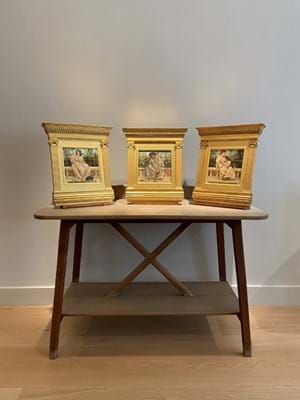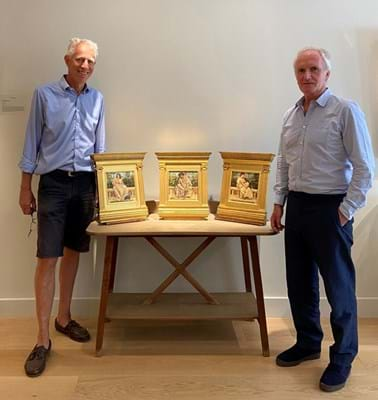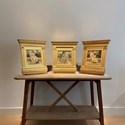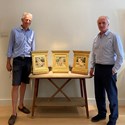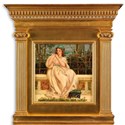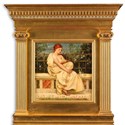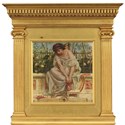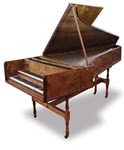The 8in (20cm) square pictures were painted between 1870-72 and were originally set into a monumental walnut and pear wood cabinet designed by Edward Tarver and made by Gillows.
They were removed and separated at some point in the early 20th century, but recently one of them emerged at a Christie’s sale in London.

A design for the cabinet which originally housed the panels, as illustrated in 'The Architect' in 1870.
‘Spooky serendipity’
By coincidence, the other two pictures were also on offer barely yards away at Rupert Maas’ new gallery in Duke Street which stands directly opposite one side of Christie’s King Street rooms.
The Christie’s picture sold on low estimate when it was knocked down at £30,000 (£37,500 with premium) and the buyers at the auction on July 15 then also went on to buy Maas’ works too for similar sums each, reuniting the three.
Maas said: “The collectors did not know we had them at first but they saw ours on an Instagram post we put out just before the Christie’s sale.
“We knew each other already but it was wonderful to show ours across the road from Christie’s; it seemed spooky serendipity to the collectors, and to me!”
The diminutive pictures demonstrated that Poynter, the son of an architect, was an accomplished decorative designer before becoming a grand painter of neoclassical subjects.
Painted on gilded wood, they have a vivid lustre thanks to the laying on of colour in varying thickness to generate the effects of ref lection and translucence. Before being set into the Gillows cabinet, the three works were exhibited at the Dudley Gallery in London as a group titled Three Summer Days.
Spanish patrons
The cabinet had been commissioned by the de Murrieta brothers, two wealthy Spanish bachelors who made a fortune out of trading with Argentina, for the drawing room of their Sussex estate, Wadhurst Hall.
The design of the cabinet was illustrated in The Architect in 1870 and shows the position of the panels to the upper section.
After 1890 the Sussex property was sold and the cabinet went to FD Lambert of Moor Hall. It was thought that not long before the contents sale of Moor Hall in 1916, the three paintings were removed and placed in lavish tabernacle frames, probably due to Poynter’s status having risen considerably (he was elected president of the Royal Academy in 1896) and the panels therefore becoming much more valuable as ‘wall art’.
The three works were bought by the Earl of Haddington in the 1916 sale but subsequently became separated with two of the panels, now titled Reading and The Knot, staying together and the third titled The Sandal going elsewhere.
Maas said: “It ’s a tremendous accomplishment of the buyers to reunite them.
“It would be amazing to find the Gillows cabinet now, but, sacrilege I know, I think I agree with FD Lambert – the paintings look better on the wall.”


